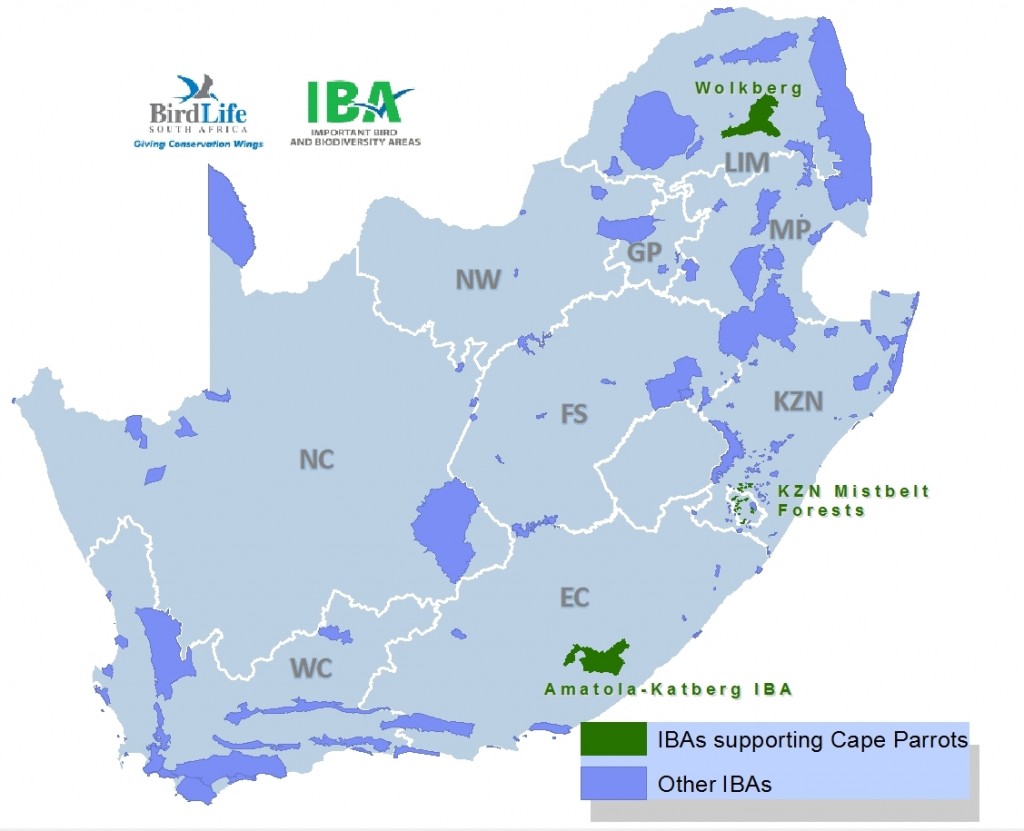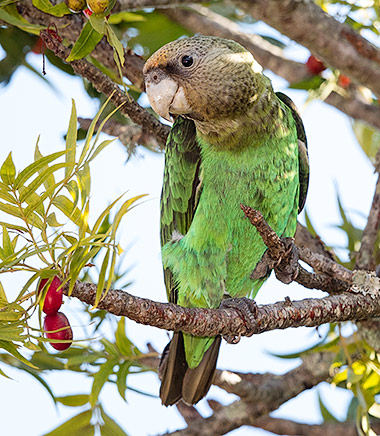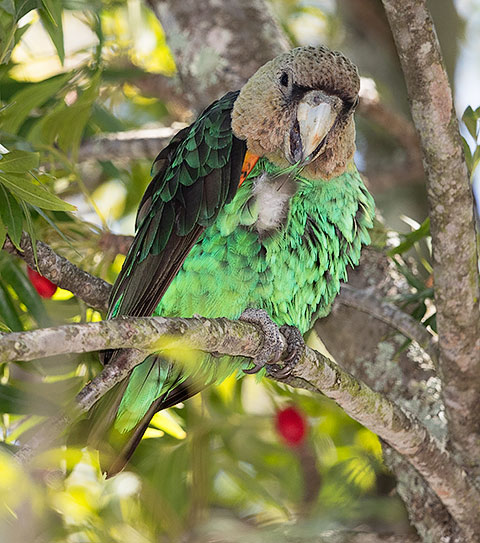Cape Parrots

Carry this bag to show your support!
As part of their Good Business Journey, Woolworths is proud to support initiatives like BirdLife South Africa’s Important Bird and Biodiversity Areas Programme. Through partnerships with their customers and organisations like Birdlife South Africa, Woolworths is increasing awareness of environmental issues and the importance of conservation, while actively supporting Birdlife South Africa projects. Through the sale of each bag, Woolworths donates R10 to Birdlife South Africa.
 Photo Credit: Warwick Tarboton
Photo Credit: Warwick Tarboton
WHO ARE BIRDLIFE SOUTH AFRICA?
BirdLife South Africa is a registered non-profit and public benefit environmental organisation whose vision it is to promote the understanding, study, conservation and enjoyment of wild birds and their habitats.
Important Bird and Biodiversity Areas Programme (IBA)
The Important Bird and Biodiversity Areas (IBA) Programme is one of BirdLife South Africa’s most important conservation programmes. It speaks to all four focal areas of BirdLife South Africa – species, sites, habitats and people. It identifies and works to conserve a network of sites and habitats across South Africa critical for the long-term survival of bird species that:
-
are globally threatened
-
have a restricted range
-
are restricted to specific biomes/vegetation types
The purpose of the IBA Programme is to identify and protect a network of sites, at a biogeographical scale, critical for the long-term viability of naturally-occurring bird populations. The IBA Programme helps to prioritise conservation action amongst sites. BirdLife South Africa is at the forefront of improving management of habitats and securing the protection of key sites within IBAs. The IBA Programme is leading on aspects of Biodiversity Stewardship (private land conservation and protection) work in South Africa, having now partnered in declaring over 90 000 hectares as protected areas, and another 130 000 hectares in progress.
WHAT PROJECT WILL THE FUNDS SUPPORT?
The funds raised through this initiative will go towards helping to protect and secure some of the last remaining habitat of the Cape Parrot (Poicephalus robustus robustus). The Cape Parrot is listed as Endangered as they are habitat specialists, dependent on mature Afromontane Yellowwood (Podocarpus) forest (at 1000-1700mamsl) for most of their diet and nesting sites.

Photo Credit: Warwick Tarboton
Today, less than 2% of all South African landscapes comprise of natural forest and only a small proportion of those are Afromontane Yellowwood forests. Habitat fragmentation and loss continue through legal and illegal extraction of yellowwoods from these forests, further fragmenting the Parrot’s already disjointed habitat.
Example of fragmented Cape Parrot forest habitat – Amatola IBA
For this reason the species is a priority trigger species for identifying IBAs. The core of the Cape Parrot population (where the most critical habitat remains) is represented by three IBAs namely the Wolkberg Forest Belt in Limpopo, the KwaZulu-Natal Mistbelt Forest in KZN, and the Amatola-Katberg Mountain in the Eastern Cape. BirdLife South Africa is currently beginning the process of attempting to get the Amatola-Katberg Mountain IBA expanded. The biggest challenge facing the conservation of the species is the need to protect the forest habitat on which they so closely rely, made difficult by a history of over-utilisation, degradation and consequent fragmentation which continues to this day. Mortality from psittacine beak and feather disease (PBFD) is also an increasingly common concern.

HOW WILL THE CAPE PARROT BAG ASSIST US ?
Funds raised will be used to help safeguard remaining patches of Cape Parrot habitat and ensure that these fragmented patches are secured. Funds will also go towards supporting next year’s Cape Parrot Counting Day, which is an annual census event held to gain information on the current population of Cape Parrots in South Africa.
Photo Credit: Warwick Tarboton
Who are the principle people in the organisation, who will be directly involved in the implementation of the funds?
Mark Anderson (CEO of BirdLife South Africa)
Daniel Marnewick (IBA Programme Manager)
When was the project be initiated?
The IBA Programme commenced in 2009 and is an ongoing programme. The goal is to continually increase the level of protection given to land identified within IBAs, to protect the species that rely on them.

HOW TO OFFER FURTHER SUPPORT?
– By purchasing one of the Cape Parrot bags you are already showing your support.
– Become a BirdLife South Africa Member (http://www.birdlife.org.za/get-involved/join-birdlife-south-africa)
– Make donations to the IBA Fund to support grassroots IBA conservation through the GivenGain platform (https://www.givengain.com/cause/4593/campaigns/12899/)
MEDIA & OTHER LINKS
Website: http://www.birdlife.org.za/conservation/important-bird-areas
Facebook and Instagram: @birdlife_sa
For more info on the Bags4good project, go to:
www.bags4good.org.za
or e-mail goodbusinessjourney@woolworths.co.za
Facts about IBAs and Cape Parrots
-
The Cape Parrot is endemic to South Africa.
-
The estimated total population of Cape Parrot in the wild is 1000-1500 birds.
-
Nest sites are a limiting resource and the birds very seldom occupy artificial nest boxes.
-
Breeding success is low, with usually only one chick fledging from a clutch of three to five.
-
Cape Parrots feed predominantly on the endocarps of Podocarpus fruits (Afromontane Yellowwood).
-
The level of illegal national and international trade in Cape Parrots remains unquantified.
-
South Africa has 112 IBAs.
-
South Africa’s IBA network covers all biomes and spans 14million ha.
-
Only 46% of South Africa’s IBAs are formally protected.
-
The IBA network aims to protect:
-
92 globally threatened bird species
-
132 regionally threatened bird species
-
136 congregatory bird species
-
-
Achievements by the IBA Programme include, but are not limited to:
-
Publishing national management guidelines for grasslands and fynbos.
-
The formal protection for over 90 000 ha in priority grassland IBAs.
-
Working to formally protect an additional 130 000 he in priority grasslands and estuary IBAs.
-
Achieving a national first in successfully obtaining tax relief for a landowner in an IBA who has made the highest level of conservation commitment in declaring a Protected Area.
-
 Bags 4 Good
Bags 4 Good


